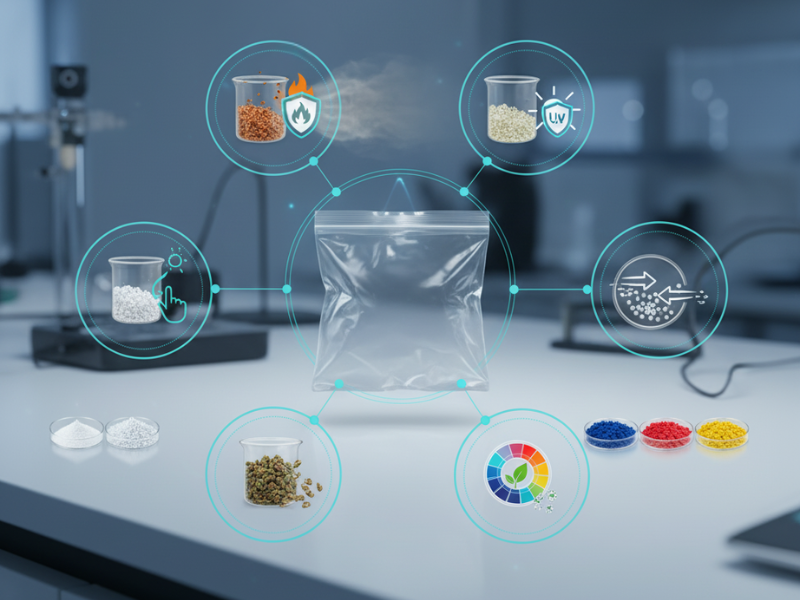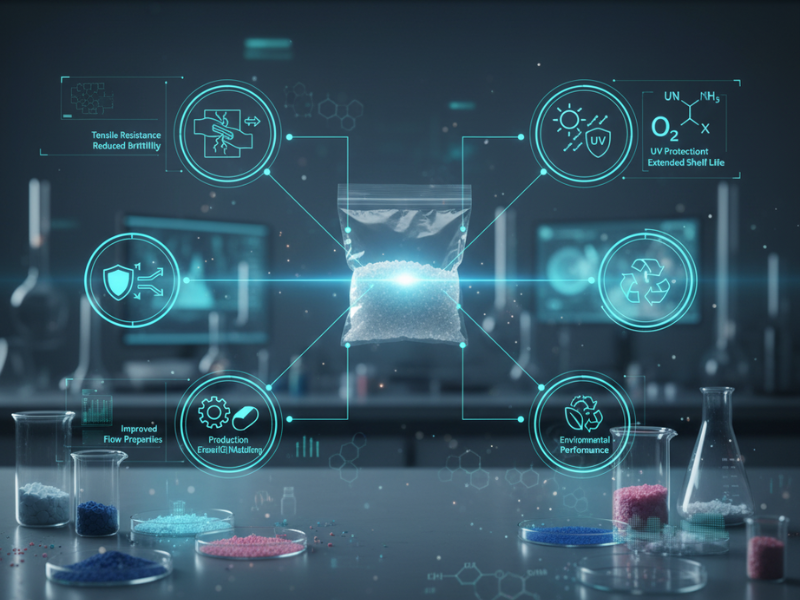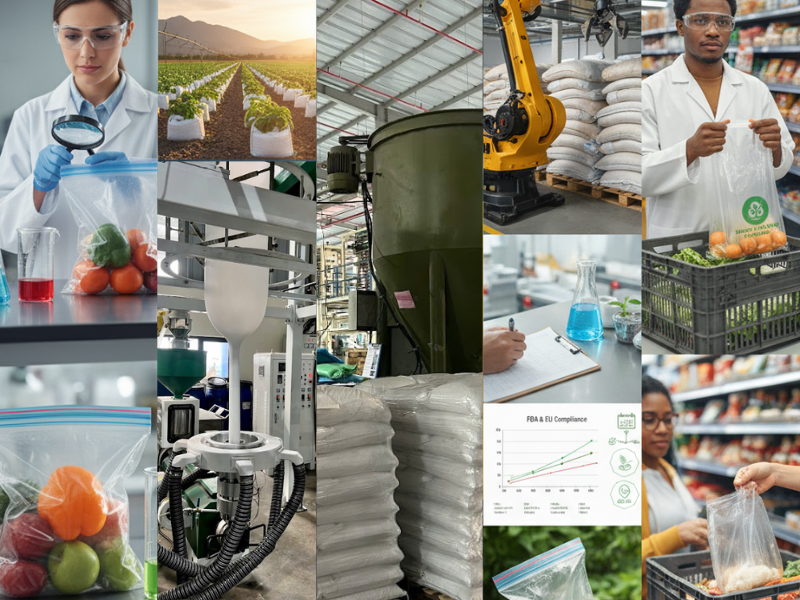Plastic bags are among the most common packaging solutions in modern life, valued for being lightweight, versatile, and cost-effective. Still, without the right additives, bags may face problems such as sticking, tearing, discoloration, or short lifespan. Additives are therefore essential in ensuring both quality and performance. Eco Plastic provides a comprehensive explanation of additives and a detailed guide on how to select the right ones.
1. Types of Plastic Bag Additives
- Antioxidants – Prevent polymer degradation caused by heat and oxygen exposure.
- UV Stabilizers – Protect plastic bags from sunlight damage, maintaining clarity and strength.
- Slip Agents – Reduce friction, making bags easier to separate and handle.
- Antiblock Agents – Prevent film layers from sticking together.
- Colorants – Provide consistent and appealing colors for branding and product differentiation.
- Biodegradable Additives – Enable eco-friendly plastic bags that can decompose under specific conditions.

Types of Plastic Bag Additives
2. Functions of Plastic Bag Additives
Additives do not merely enhance appearance; they play crucial roles in improving mechanical, physical, and environmental performance. By strengthening tensile resistance, reducing brittleness, and ensuring flexibility, additives directly affect usability.
Additives also contribute to shelf life by protecting polymers from UV radiation and oxidation. Furthermore, they help optimize production efficiency by improving flow properties and minimizing defects during extrusion or molding.

Functions of Plastic Bag Additives
3. Essential Additives for Plastic Bags
In plastic bag manufacturing, certain additives stand out due to their wide applications and proven effectiveness. Antioxidants and UV stabilizers are commonly used to increase durability and weather resistance, especially for bags stored outdoors or exposed to sunlight. Slip agents and antiblock agents enhance user experience by making packaging easier to handle, a key factor in retail and food industries. Biodegradable additives, on the other hand, have gained prominence as sustainability becomes a priority, helping reduce environmental footprint without compromising performance.
4. Selecting the Right Additives
Choosing appropriate additives for plastic bags requires careful consideration of multiple factors. The decision must balance cost efficiency, technical performance, and environmental responsibility.
4.1 Application Requirements
The intended use of plastic bags largely determines which additives are necessary. For instance, food packaging demands additives that comply with safety standards while maintaining freshness and clarity. Agricultural bags may require UV stabilizers to withstand outdoor exposure. Industrial packaging might prioritize high mechanical strength and resistance to tearing.
4.2 Processing Conditions
Extrusion, molding, and film-blowing processes differ in terms of temperature, pressure, and speed. Additives must be compatible with the chosen manufacturing method to prevent degradation or uneven distribution. For example, certain antioxidants are designed to resist thermal breakdown during high-temperature extrusion, ensuring product consistency.
4.3 Regulatory and Environmental Standards
Modern plastic production must adhere to strict regulatory guidelines, particularly for food-contact and medical applications. Additives should meet FDA or EU compliance, depending on the target market. Additionally, the growing demand for eco-friendly packaging makes biodegradable additives increasingly important. Companies must weigh whether to integrate oxo-biodegradable compounds, compostable polymers, or other sustainable solutions.
4.3 Cost vs. Performance Balance
While premium additives often provide superior results, they may not always be cost-effective for large-scale production. Selecting the right balance between affordability and functionality is essential. Manufacturers typically conduct performance testing to identify the lowest additive concentration that achieves desired effects, optimizing both cost and quality.
4.4 Long-Term Performance
Additives must guarantee not only immediate improvements but also long-term stability. For instance, antioxidants should prevent polymer breakdown during both processing and storage. UV stabilizers must retain effectiveness over extended exposure periods. Packaging for export markets may require higher durability due to varying climates and transportation conditions.
4.5 Market and Consumer Expectations
Consumer perception is increasingly influenced by environmental awareness and product quality. Transparent, odor-free, and recyclable bags are in demand. Selecting additives that align with market expectations can significantly boost competitiveness. For instance, using non-toxic colorants and biodegradable options enhances brand reputation while addressing sustainability concerns.

Selecting the Right Additives
5. Frequently Asked Questions - FAQs
5.1 Which additives improve the strength and durability of plastic bags?
Additives such as antioxidants and UV stabilizers enhance durability by protecting against heat, oxidation, and sunlight degradation, while slip and antiblock agents improve usability.
5.2 Are plastic bag additives safe for food packaging?
Yes, when selected according to FDA or EU regulations, additives used in food-grade plastic bags are safe and compliant with international safety standards.
5.3 Can additives make plastic bags eco-friendly?
Yes, biodegradable and compostable additives allow plastic bags to break down under specific environmental conditions, helping reduce waste and environmental impact.
Conclusion
Plastic bag additives are crucial for improving durability, safety, and sustainability in packaging. Selecting the right solutions ensures bags meet both performance and environmental requirements. Through the insights provided by Eco, this topic becomes clearer, helping manufacturers better understand how additives shape product quality and long-term value.














